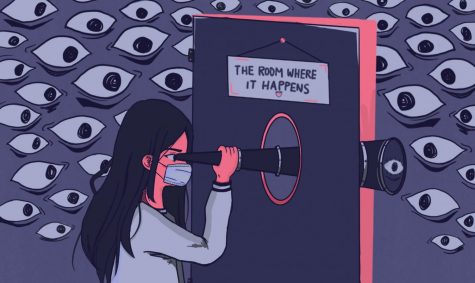An APpalling Waste: How AP exams lost their way

As the spring term approaches its end, fifth formers face a major obstacle between them and summer break: APs. These dreaded “advanced placement” courses are the bane of any fifth former’s existence and come as the conclusion of a long year of studies in one course. While the popularity of these terrifyingly-long tests has only increased in recent years, they have also begun to be justifiably criticized.
Beginning in the 1950s as a small test taken by only a handful of students, AP tests have expanded dramatically in recent years and are now almost ubiquitous in many parts of the country with around 2.5 million students taking the tests annually as of 2015, according to the College Board. The fairness and effectiveness of the tests has come into question recently, and for good reason. There is an obvious correlation between socioeconomic status and performance on AP exams. Just look on the College Board website, where they list the top performing states on the examinations. The top performing states: Maryland, Connecticut, Virginia, and Massachusetts, are the first, third, fourth and fifth wealthiest states by per capita income in America. To better represent the socioeconomic spectrum of high school students, California spent 2.8 million dollars in state funds to pay for AP testing. With 41 percent of students failing the examinations, the state spent upwards of 1.1 million dollars on failed tests. AP classes, although theoretically unrelated to college admissions, are often viewed as a sign of a school’s academic strength. As a result, the tests constitute another hurdle that favors higher income students in the college admission process.
A second argument against AP classes is that they take away from the educational experience of students by encouraging rote memorization and discouraging in-depth discussions. While most Groton AP classes are not simply taught to the test, there is certainly pressure to get high scores on the tests on both the students and their teachers. I strongly believe in the way that the Groton English department handles the AP tests–for the most part ignoring them and reassuring students that the Groton English curriculum is strong enough that test-specific preparation is unnecessary. Going even further than Groton is Fieldston School in the New York, where AP classes have been discarded altogether in favor of honors and advanced courses. Without the pressure of all-important exams looming over their heads, teachers and students at the school have been able to explore topics in greater. With its rigorous reputation, Fieldston graduates have continued to attend competitive colleges despite not taking the tests.
This is not, however, the case at most schools. In most public high schools, where AP courses are not offered, this lack of testing disadvantages their students and hurts the reputation of their schools in the college admission process. In the schools where AP classes are available, there is increasing pressure on students to learn and teachers to teach to the test, resulting in curricula that are not only boring but also ineffective at preparing students for college-level classes. A test intended to complement ninth through twelfth-grade academics has become an infectious virus, controlling and destroying intellectual curiosity in high schools across America.









